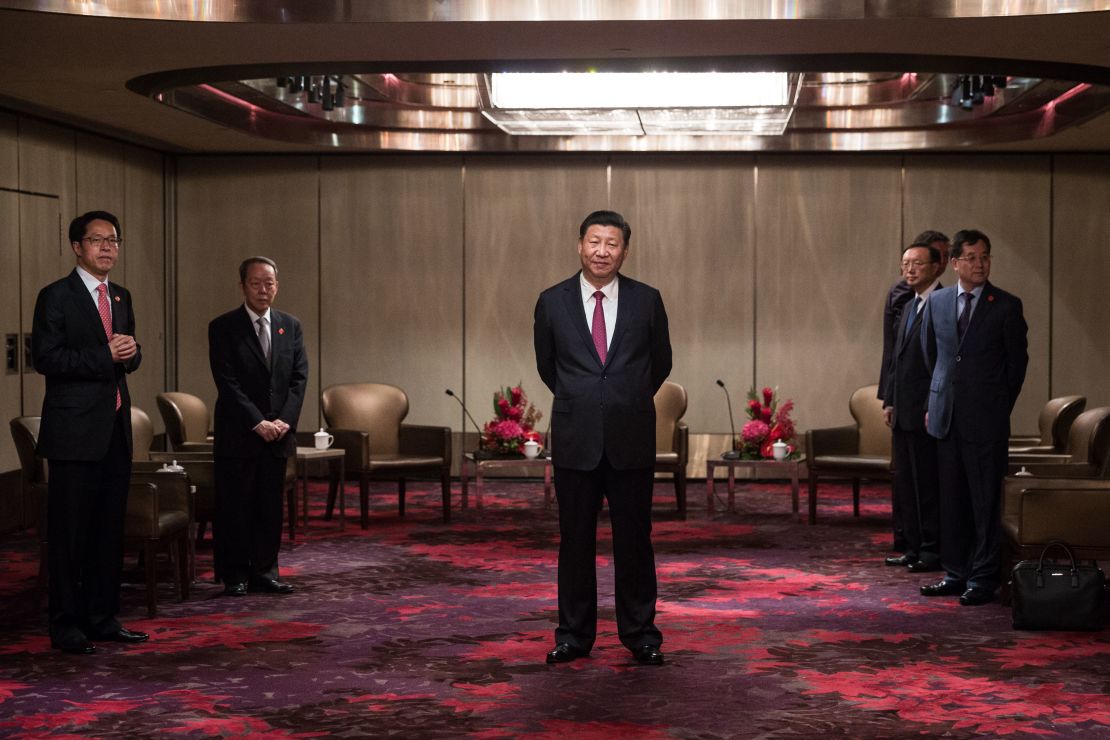Trump’s ‘anxious’ tariff comments put China in control
The White House’s latest signs of easing its position on tariffs against China do not indicate a notable advancement in US-China trade talks, but may present Beijing an opportunity to get a better deal, economists said.
US President Donald Trump appeared to soften his stance on the US-China trade war on Tuesday, telling an Oval Office press conference that tariffs on Chinese goods “will not be as high as 145 per cent” and that “it’ll come down substantially, but won’t be zero”.
His latest remarks follow claims he made last week that “top officials” from Beijing were talking with their Washington counterparts, and that a trade deal between the world’s two largest economies would soon be agreed.
Chen Zhiwu, a chair professor of finance at the University of Hong Kong, said the comments were “typical Trump” and “nothing unusual”.
“In reality, there hasn’t been any substantial progress or change in the US-China tariff negotiations. But this is [Trump’s] way of signalling to China,” Chen said.
“The more he talks like this, the more it shows how anxious the US side is. Trump and his team are under pressure, but China isn’t showing any signs of impatience.”
In the short term, China is unlikely to be in a rush to secure a deal with the United States, as the pressure on Trump’s team to bring the trade war to an end is likely to continue ramping up over time, Chen said.
Bilateral trade between the two sides – which stood at US$688.3 billion in 2024 – threatens to break down after weeks of rapid-fire tit-for-tat tariff hikes, which have seen Washington raise duties on Chinese goods by 145 per cent and Beijing hit back with retaliatory levies of 125 per cent.
The escalating confrontation has led the International Monetary Fund to slash its economic growth forecasts, shaken financial markets, and triggered a large sell-off of US Treasury bills over the past two weeks.
Chinese factory hopes to double turnover despite US tariffs
“From China’s side, I think they’ll just take a look and wait for a bit. The more Trump shows his anxiety, the more it tells China there’s no need to panic or rush. In fact, it may make them feel even less pressure to accelerate anything,” Chen said.
Also on Tuesday, US Treasury Secretary Scott Bessent reportedly told a closed-door investor summit that the tariff war with China had led to an unsustainable, two-way trade “embargo” and that he expected the situation to de-escalate.
Speaking on the sidelines of the International Monetary Fund and World Bank’s spring meetings, Bessent said that negotiations with Beijing had not started but that a deal was possible, according to an attendee.
“No one thinks the current status quo is sustainable, at 145 and 125 [per cent], so I would posit that over the very near future, there will be a de-escalation,” he said, referring to the tariff increases imposed by the US and China in recent weeks. “We have an embargo now on both sides.”
Alicia Garcia-Herrero, chief economist for Asia Pacific at Natixis, said Trump appeared to be “panicking” due to the plunging markets and still-high US Treasury yields, as well as investors’ apparent loss of confidence in the US dollar.
“[Trump] needs a quick deal. China does not need to offer anything big in such circumstances, because the US is so desperate for a deal,” she said. “With a few billion in imports from the US, China might manage to lower the tariffs. The deal might be sweeter for China than in 2019.”
Xu Tianchen, senior China economist at the Economist Intelligence Unit, said the White House’s tariff plans remained “pretty fluid”. For things to really change, clearer signs of a deterioration in the US economy would be needed, he added.
“Rising living costs, economic disarray and popular discontent will eventually force a definite pivot of Trump’s approach,” Xu said.
მიმაგრებული სურათი (გადიდებისთვის დაუწკაპუნეთ სურათზე)




 ·
·